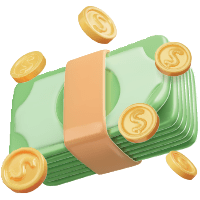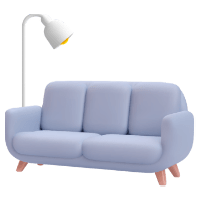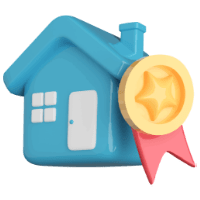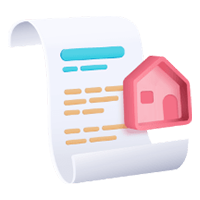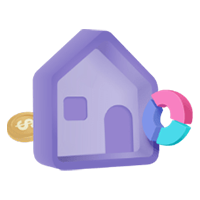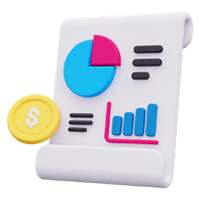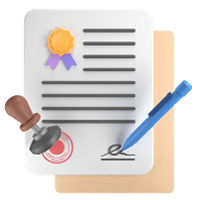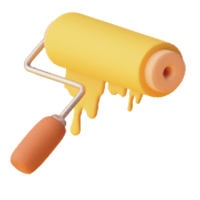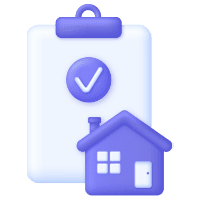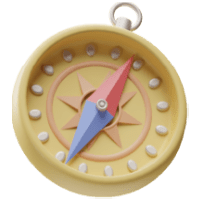by Lalaine C. Delmendo
House prices in Slovakia are now rising strongly, with demand buoyed by very low interest rates. The average residential property pricerose by 5.37% to €1,295 (US$1,437) per square metre (sq. m.) during the year to Q3 2016, the country’s highest y-o-y increase since the housing market depression started in Q4 2008, according to the National Bank of Slovakia (NBS). When adjusted for inflation, property prices rose by 6.15%.
During the latest quarter, property prices rose by 1.25% (1.59% in real terms).Slovakia’s house prices are still 16.4% below their Q2 2008 peak (-24.8% in real terms).Bratislava region, which has the country’s highest house prices, spearheaded the price rises with a 7.26% price rise to €1,818 (US$2,017) per sq. m. during the year to Q3 2016, an acceleration from a y-o-y rise of 3.23% a year earlier, and the highest annual growth since Q4 2008.
Other regions with residential property price increases:
Zilina experienced the biggest rise of about 10.49% to €832 (US$923) per sq. m. during the year to Q3 2016
In Nitra, house prices rose by 7.73% y-o-y to €599 (US$665) per sq. m. in Q3 2016
In Trnava, house prices rose by 4.69% y-o-y to €871 (US$966) per sq. m. during the same period
In Presov, house prices rose by 3.41% to €789 (US$875) per sq. m. during the year to Q3 2016
In Trencin, house prices increased 3.32% to €653 (US$724) per sq. m. during the year to Q3 2016
AVERAGE RESIDENTIAL PROPERTY PRICES
HOUSE PRICE BOOM (Q1 2005-Q4 2008)
GLOBAL FINANCIAL CRISIS, EUROZONE DEBT CRISIS (Q1 2009-Q4 2015)
Y-O-Y CHANGE
Q-O-Q CHANGE
PER SQ. M (Q3 2016)
SLOVAKIA
78.19
-12.81
5.37
1.25
1,295
REGIONS
Bratislava
70.69
-6.13
7.26
1.85
1,818
Tranava
65.23
-15.83
4.69
1.28
871
Nitra
111.08
-29.40
7.73
3.10
599
Trencin
177.00
-22.13
3.32
1.71
653
Zilina
122.97
-17.13
10.49
1.59
832
Banska Bystrica
124.67
-14.06
-3.12
-6.81
684
Kosice
118.11
-3.44
-3.83
0.65
928
Presov
77.76
-22.15
3.41
3.82
789
Source: National Bank of Slovakia
The housing boom in Slovakia lasted from 2006 to Q2 2008, with house price rises ranging from 14% to 35% per annum. The surge stopped in late 2008, and prices either fell or only increased a little in following years.
In 2009, house prices fell by 12.31% (-12.66% in real terms)
In 2010, house prices fell by 2.08% (-3.16% in real terms)
In 2011, house prices fell by 2.68% (-6.86% in real terms)
In 2012, house prices increased by 0.89%, but in fact fell by 2.55% when adjusted for inflation
In 2013, house prices fell by 2.57% (-3.01% in real terms)
In 2014,house prices increased by a meagre 0.25% (0.25% in real terms)
In 2015, house prices rose by 1.15% (1.62% in real terms)
“The latest year is a record from the viewpoint of demand,” Ján Bošácky of Jones Lang La Salle told The Slovak Spectator.
“Regional cities, especially Košice, are also experiencing a not insignificant increase in the number of sold apartments as well as the number of launched projects,” Bošácky added.
Slovakian house prices are expected to continue rising during the remainder of this year and until 2017, amidst a continued surge in property demand both from local homebuyers and foreign investors, according to local property experts.
Slovakia registered economic growth of 3.7% during the year to Q2 2016. The National Bank of Slovakia (NBS) predicts that the Slovakian economy will expand by 3.2% this year and by another 3.3% in 2017.
There are no legal restrictions on foreigners buying buildings in Slovakia.
Flat prices are surging
Flats registered the biggest house price gains nationally, surging by 8.9% y-o-y in Q3 2016 to an average price of €1,482 (US$1,644) per sq. m, according to the NBS.
1-room: prices soared 11.2% to €1,649 (US$1,829) per sq. m during the year to Q3 2016
2-room: prices rose by 9.3% to €1,542(US$1,711) per sq. m during the year to Q3 2016
3-room: prices rose by 9% to €1,416(US$1,571) per sq. m during the year to Q3 2016
4-room: prices rose by 8.3% y-o-y to €1,417 (US$1,572) per sq. m in Q3 2016
5-room: prices rose by 5.2% y-o-y to €1,532 (US$1,700) per sq. m in Q3 2016
Houses increased in value by just 2.3% to €1,104 (US$1,225) per sq. m. during the year to Q3 2016. Villa prices increased 3% to €1,830 (US$2,030) per sq. m over the same period.
Very low interest rates are boosting the market
Mortgage loan growth has been 12.7% annually from 2009 to 2015, with volumes rising from €9.5 billion (US$10.54 billion) in 2009 to €19.7 billion (US$21.86 billion) in 2015. During the boom years, the volume of housing loans to households rose by a spectacular 30.8% annually from 2005 to 2008, mainly due to very low mortgage interest rates.
Average housing loan rates in September 2016:
Average floating rate loan interest rate, or loans with interest rate fixation (IRF) of up to 1 year: 1.99%, down from 2.99% a year earlier
IRF over 1 to 5 years: 1.81%, down from 2.38% a year earlier
IRF over 5 to 10 years: 3.84%, down from 4.8% a year earlier
IRF of over 10 years: 2.01%, down from 3.94% a year earlier
The continuous decline of interest rates on housing loans in Slovakia is due to the European Central Bank (ECB) cutting its key rate eight times since November 2011 to a historic low of 0.00% in March 2016.
Yet these cuts have had less effect than might be expected, as banks have become very cautious. Slovakia still has one of the lowest mortgage-debt-to-GDP ratios in the EU, at 25.25% of GDP in 2015, less than half of the EU 28’s ratio of about 50%.
In August 2016, the total outstanding amount of housing loans to households rose by 13% to €21.5 billion (US$23.8 billion) from the same period last year, according to the NBS.
Rental market is very limited
Bratislava appears to be an attractive location to own properties but anecdotally, properties can be quite hard to let. Bratislava is a small place, and few people absolutely need to live in the centre of town unlike the larger capitals of other countries where commuting times can be inconveniently high. Because Slovakia itself is small, the number of expatriates, embassies, and international companies in Bratislava is small, which again restricts the supply of tenants.
Owner-occupancy in Slovakia has risen sharply from 49.7% in 1990 to 90.3% in 2014, making Slovakia the country with the third highest homeownership rate in the EU, way past the EU average of 70.1% in 2014. Tenants were only around 9.7% of Slovakia’s population in 2014, according to Eurostat.
But only 0.1% of Slovakia’s housing stock is let out by private landlords, mainly in Bratislava.
The growth of owner-occupation is partly due to a contractual savings system (Bauspar) that makes it easy for Slovaks to obtain housing loans. This Bauspar system allows borrowers to take loans at lower interest rates, with the government paying an interest premium on the amount saved.
In 2005, the government decreed the abolition of rent control, effective July 1, 2007. However, the decree was never implemented. Rent deregulation has been postponed repeatedly, as Parliament refuses to deal with this highly sensitive issue.
Yields are moderately good; rents are still low
According to the Global Property Guide research conducted in July 2016, in Stare Mesto, Bratislava’s city centre:
Gross rental yields on 50 sq. m. apartments were around 5.73%.
Larger units of around 85 sq. m. and 200 sq. m. had slightly lower yields of 4.74% and 4.98%, respectively.
The average yield in Stare Mesto fell slightly to around 5%, from 5.53% two years ago.
In the Bratislava’s less upscale districts of Ruzinov and Nove Mesto (Bratislava II and III), gross rental yields were not much different, between 4.58% to 5.43%.
Rents range from around €10 (US$11) to €12.5 (US$13.9) per sq. m. per month in the Old Town of Bratislava, whereas in the nearby areas of Ruzinov and in the New Town, rents range from €8 (US$8.9) to €10.25 (US$11.4) per sq. m. per month.
Round trip transaction costs are very low on residential property in Slovakia.
End of the flat tax
One of the most famous characteristics of the Slovak economy was previously its ‘flat tax’ of 19% on income, consumption, and corporate profits, operative since 2004. However, Slovakia’s parliament scrapped the flat tax from January 1, 2013, raising income tax for corporations to 23% and for individuals earning more than €3,300 (US$3,661) per month to 25%.
Higher economic expansion
Slovakia is one of Eastern Europe’s most successful transition countries. Born in 1993 after seceding amicably from the Czech Republic (the two countries were formerly known as Czechoslovakia), it has a stable polity and liberal market economy. Slovakia benefited from eight years’ reform under the centre-right coalition led by Mikulas Dzurinda (1998-2004) whose reforms won praise from international organizations, and who oversaw EU and Nato entry.
The economy’s rapid growth facilitated the country’s membership of the Organization for Economic Cooperation and Development (OECD) and the European Union (EU) in 2004. In December 2007 Slovakia became a full member of the Schengen Zone, allowing passport-free travel in the 24-member European nations.
Real GDP growth reached an impressive 10.8% in 2007, following 8.5% for 2006, 6.4% for 2005, and 5.3% for 2004. Kia, Volkswagen, and Peugeot Citroen all have built large car plants in Slovakia.
Since then, Slovakia has had two terms under the socialist and populist leader Robert Fico, of the Smer party (prime minister 2006-2010, and 2012 to present).
Fico’s stewardship has been marked by tension with Hungary, populism towards Slovakia’s Roma population, and weaker economic growth
In 2008 there was 5.7% growth, and then a collapse with the crisis and a 5.5% GDP contraction in 2009. Slovakia’s economy recovered with GDP growth of 5.1% in 2010, but this was followed by 4 weak years, with 2.8% GDP growth in 2011, 1.5% in 2012, 1.4% in 2013 and 2.5% in 2014. In 2015, the economy bounced back somehow, recording a 3.6% expansion.The National Bank of Slovakia (NBS) predicts that the Slovakian economy will expand by 3.2% this year and by another 3.3% in 2017.
In September 2016, the central government budget deficit reached €644.37 million (US$714.9 million), less than the €1.18 billion (US$1.31 billion) deficit recorded a year ago, according to the Ministry of Finance of the Slovak Republic, or around 2% of GDP, down from 3% in 2015 and 2.7% in 2014.
In the 2017 budget, the country is expected to reach its smallest-ever deficit of 1.3% of GDP. Slovakia’s gross public debt will be 53.4% of GDP this year and will fall slightly to 52.7% of GDP next year, according to the European Commission.
The country had an annual inflation rate of -0.5% in September 2016, the third lowest level in the euro area, according to the Eurostat.
In Q2 2016, nationwide unemployment fell to 9.6%, down from 11.2% a year earlier and the lowest level since Q4 2008, according to the Statistical Office of the Slovak Republic. The IMF expects the unemployment rate to fall to 8.8% in 2017.
Resistance to accepting refugees
Last year, Slovakia and Hungary have filed a lawsuit against the European Union’s (EU) mandatory immigration quotas at the European Court of Justice (ECJ). Slovak Prime Minister Robert Fico even warned that he was ready to propose “a discharge of his country from the European Union” if the EU insisted Slovakia in taking in refugees from the Middle East.
The European Union had adopted a quota system last September, suggesting relocating 160,000 asylum seekers across the 28-nation bloc.Fico clarified that the lawsuit was due to the way the relocation of migrants (currently in Italy and Greece) was decided upon, and not aimed against the migrants themselves.
In October 2016, Slovakia announced that it would submit an alternative solution to the migration crisis in the EU.Slovakia currently holds the rotating six-month EU presidency until the end of the year.
“Slovakia will bring in a concrete proposal with other elements which will clearly manifest solidarity without which, the migration crisis cannot be resolved,” said Ivan Korčok, Ministry State Secretary and Government Proxy for the Slovak Council of the EU Presidency.
According to Eurostat, about 626,715 asylum applications were received by EU member countries in 2014, and a whooping 1.83 million illegal border crossings were recorded in 2015.
Let’s block ads! (Why?)
Source: Global-Property-Guide





